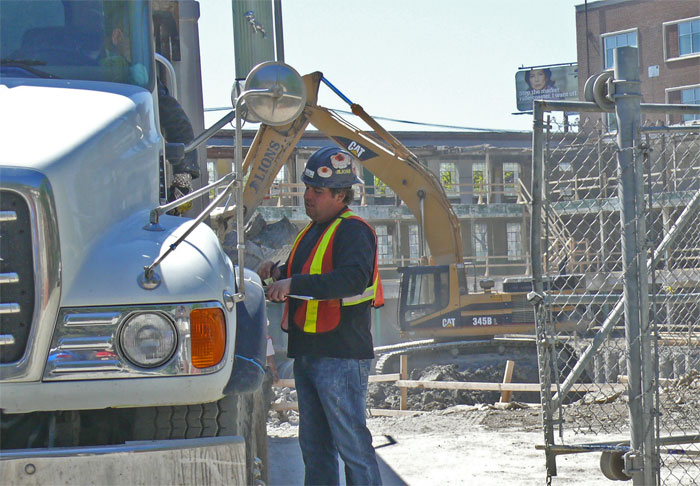SearchUser loginOffice of CitizenRest in Peace,
Who's new
|
MODERN MIKE MULLIGAN - DIGGING DIRT WELLSubmitted by Jeff Buster on Wed, 05/28/2008 - 08:47.
 Moving dirt can be intellectually, as well as physically, challenging. Mike Mulligan found digging challenging during the transition from steam to Diesel excavating “shovels” in the 1930’s, and digging dirt is still challenging today.
Dirt is moved out of construction sites for numerous reasons, probably the most important of which are 1. develop more usable space, and 2. remove soil which is unsuitable for foundations.
Practically every new building which is designed today uses its “basement” for parking space and for space for housing mechanical systems – including elevator pumps, fire pumps, sump pumps, trash removal, and electrical rooms.
Many cities, Cleveland, Chicago, and Toronto included – have clay soils near the surface. Clay is unsuitable for foundations – so the clay must either be removed, or deep pile or caisson foundations installed down through the clay to a lower level of soil or rock which can bear the weight of the new building. From purely a foundation standpoint, constructing a building in Cleveland is more expensive than building the same structure in NYC where gneiss is generally close to the surface.
The site above is in Leslieville, a suburb of Toronto, Canada. When I spoke with the “dispatcher” (hardhat in the photo) at the end of the day yesterday, he told me that 90 truckloads will have been moved off this site during the days 8 hour shift. As the dump trucks que’d up in the adjacent residential street the dispatcher would write down the ID of each truck (the trucks were “Gypsies”, operated by their individual owners) and exchange signatures on bills of lading and time slips. I learned that last week in Toronto there was a strike by the gypsy O/Os. With Diesel fuel cost escalating, the drivers were striking to raise their hourly rate from $75.00 to $95.00 per hour. The construction manager at this site had offered $85.00 per hour – which was clearly adequate to obtain enough trucks to make 90 trips out of the site.
The clay soil was excavated by a Caterpillar 345 L excavator, with a 3.5 CuM bucket. Each dump truck took 4 scoops. The excavator made little noise and no visible smoke though its 380 HP engine was running flat out. The excavation pit was staged so that the dump trucks backed down into the hole and backed up to the Cat. As one truck was pulling away full, another was being loaded, and a third truck was moving into place. The trucks were hauling the clay to a “sanitary" landfill where it would be used for “cap” on the trash. The round trip took 2.5 hours – suggesting that there were about 30 trucks hired to move the 90 loads in an 8 hour shift.
The dump trucks did cause quite a bit of dust from the dry clay to blow up into the air. I noticed that the dust came from two causes – the truck’s engine fans, and the truck’s compressed air automatic water separator discharge. Both these causes of site dust could easily be eliminated by the truck designers.
So, a few questions: 1. With the trucks being O/O, how are 30 trucks “hired” for a day – are 30 truckers called individually by the site contractor or is a broker used? I’ll bet there is a broker. How could this system be improved using the internet? 2. When I was at the site there were about 6 trucks waiting in the street. How could cell phones (and their GIS) be used to better co-ordinate the sequencing of the trucks to make the day’s operation more efficient for both the excavation contractor (who is paying by the hour, not the load) and the O/O?
3. What if the excavator broke down (at 10 AM and there was no spare excavator on site) – the excavation contractor would be liable for a day’s pay for each of the 30 trucks – how could that scenario be equitably balanced? Could insurance “policies” be sold to excavation contractors and the “insurance company” then send trucks off to other construction sites around town? Should all dump trucks in an urban area be connected real time on the internet?
It seems to me that with today's internet, it is time for another revolution in digging. Mike Mulligan was first published in 1939 when the Marion Steam Shovel (built in Marion, Ohio) was replaced by the first diesel driven mechanical excavators. (and then by Diesel driven hydraulic excavators).
Now is the time to take digging to the next level: precise haulage scheduling via the internet.
( categories: )
|
Recent comments
Popular contentToday's:All time:Last viewed:
|